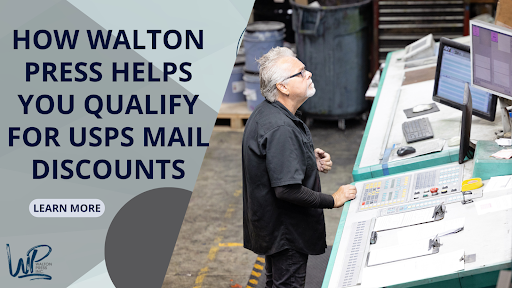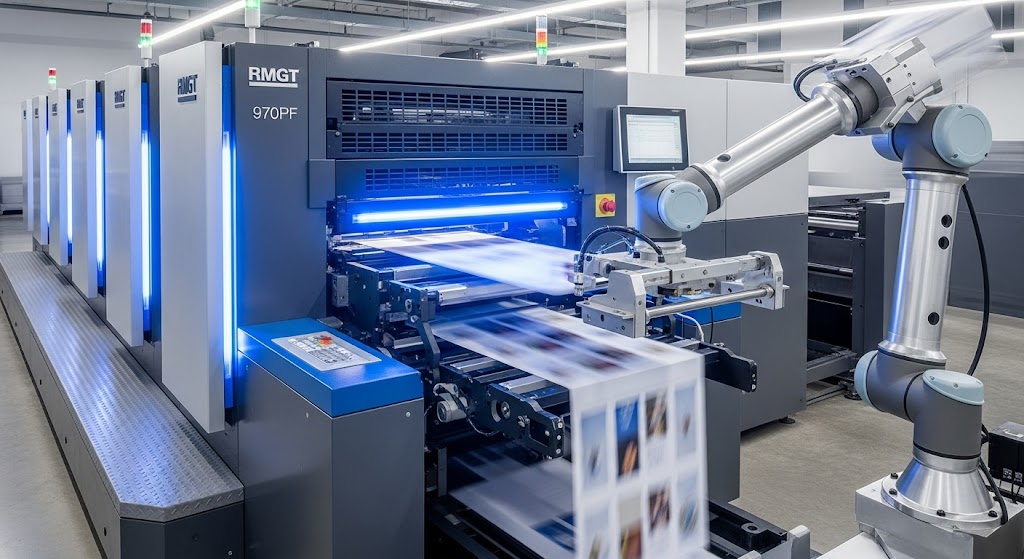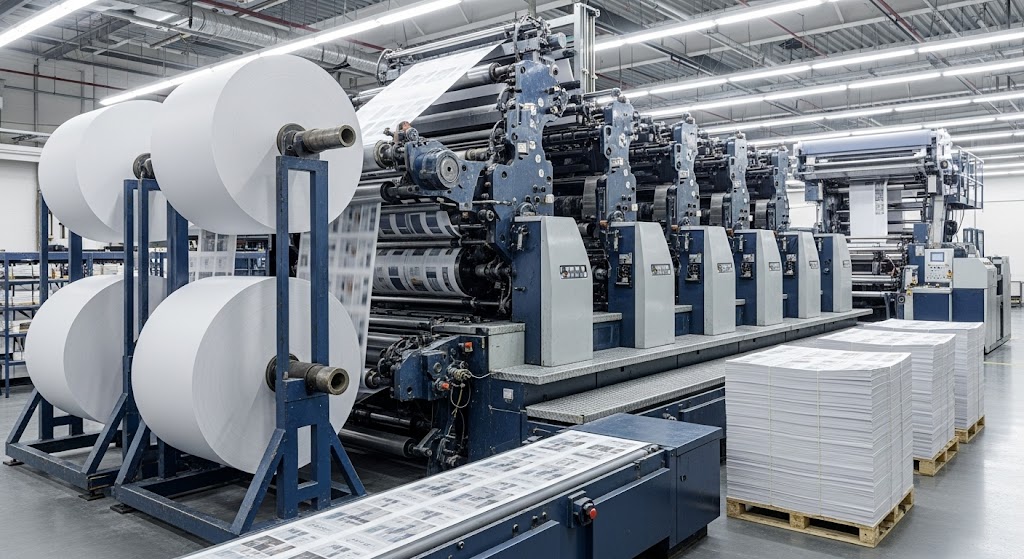- USPS 2025-2026 Promotions offer 2–5% postage discounts for mailers who use innovative print and digital features, helping businesses and nonprofits offset rising postal rates.
- Walton Press simplifies the qualification process through expert guidance, and complete mailing management, ensuring clients capture every available discount.
- As a full-service commercial printing and mailing company, Walton Press helps organizations lower mailing costs, meet USPS standards, and run more effective direct mail campaigns.
Postal rates are on the rise again, and for many businesses and nonprofits, those increases can add up quickly. But here’s the good news — the USPS 2025-2026 Promotions Program is offering multiple ways to offset postage costs and make direct mail more affordable. These incentives are designed to encourage innovation, improve engagement, and help mailers deliver better results for less.
For organizations that rely on direct mail—like marketers, publishers, nonprofits, and small businesses—partnering with a full-service printing and mailing provider like Walton Press can make the difference between missing out and maximizing every discount available.
Let’s explore how USPS promotions work, what’s new, and how Walton Press helps you qualify for postage savings while simplifying the entire process.
Understanding USPS Promotions
The USPS Promotions Program is designed to encourage mailers to try new formats, technologies, and creative strategies in their print campaigns. In return, USPS offers temporary postage discounts — usually between 2% and 5% — to businesses that participate.
These savings may sound modest, but they can be significant when you’re mailing thousands of pieces. For many organizations, participating in even one or two promotions each year can reduce overall postage expenses by thousands of dollars.
For 2025-2026, USPS has continued several of its most popular promotions, including:
- Tactile, Sensory, and Interactive Mailpiece Engagement: Encourages the use of specialty inks, finishes, and papers that make mail more engaging.
- Informed Delivery®: Offers discounts for integrating digital previews with physical mail.
- Emerging and Advanced Technology: Rewards mailers who incorporate AR, VR, or NFC into campaigns.
- Personalized Color Transpromo: Supports organizations using color and personalization in transactional mail.
- Reply Mail IMbA™: Provides incentives for using Intelligent Mail barcode accounting.
You can view the full list and eligibility details on the official USPS Promotions page.
Why USPS Promotions Matter in 2025-2026
Postage costs have continued to climb as USPS adjusts rates to meet operational demands and inflation. For mailers, that means every discount opportunity is critical.
These promotions not only reduce expenses but also improve campaign effectiveness. By trying new print technologies or integrating mail with digital tools, businesses can increase engagement, track responses, and strengthen brand recall — all while spending less per piece.
However, taking advantage of these programs isn’t always straightforward. Each promotion comes with specific rules, submission requirements, and timelines. That’s where Walton Press comes in.
How Walton Press Simplifies USPS Discount Qualification
As a full-service commercial printing and mailing company, Walton Press helps you navigate every step of the USPS promotions process. Our team understands the technical requirements, file preparation, and documentation USPS requires for approval.
Here’s how we help you qualify for maximum postage savings:
1. Expert Guidance on USPS Promotions

Our marketing mail specialists stay up to date with the latest USPS promotions and deadlines. We evaluate which programs best fit your marketing goals and mail type, whether you’re running a nonprofit appeal, magazine circulation, or retail campaign.
We don’t just print — we advise. That means helping you choose coatings, inks, or features that qualify for tactile promotions, or integrating digital elements that unlock Informed Delivery discounts.
2. Complete Mailing and Logistics Management
Getting a discount isn’t just about design; it’s also about execution. Walton Press manages data processing, address verification, presorting, and drop-shipping to USPS facilities.
We ensure that your mail qualifies for automation discounts and postal promotions simultaneously, helping you save even more. Whether you’re sending 5,000 postcards or 500,000 catalogs, we make sure every piece ships efficiently and accurately.
3. Mailing Services for Nonprofits
Nonprofit organizations face unique mailing challenges—from budget constraints to changing postal rules. Walton Press provides mailing services tailored for nonprofits, ensuring compliance with USPS Nonprofit Authorization rules and integrating promotional discounts to stretch your resources further.
Our team helps nonprofits qualify for reduced postage rates while keeping campaigns professional and donor-focused.
4. Transparent Cost Analysis and Savings Reports
Understanding where your postage dollars go helps you plan smarter campaigns. Walton Press provides clear cost breakdowns and identifies where USPS incentives can make the biggest impact.
From project estimates to final mailing invoices, you’ll always know how promotions and presorting are helping you save.
Examples of USPS Promotions Walton Press Can Help You With
Tactile, Sensory, and Interactive Promotion
Add specialty textures, coatings, or metallic inks that capture attention—and earn a 5% discount on postage. Walton Press’s printing capabilities include specialty finishes that meet USPS guidelines, helping your mail stand out.
Informed Delivery® Promotion
Integrate your printed mail with digital preview emails that reach consumers before their mail arrives. Walton Press helps set up the necessary campaign files so you can enjoy a 4% discount while gaining valuable digital engagement data.
Emerging and Advanced Technology Promotion
Whether you’re using QR codes or augmented reality, we can guide you through the setup and documentation to qualify for these forward-thinking promotions. It’s a great way to modernize your mail strategy while earning additional discounts.
The Walton Press Advantage
Partnering with Walton Press means more than saving on postage—it’s about streamlining your entire direct mail process.
We combine decades of commercial printing experience with mailing expertise to deliver a one-stop solution that’s efficient, reliable, and compliant with USPS standards.
Our clients, from regional nonprofits to national publishers, rely on us because we manage every detail, including:
- Prepress and file setup for USPS approval
- Data hygiene, address verification, and presorting
- Postal documentation and tracking
- On-time delivery to designated USPS entry points
With Walton Press, you don’t need to keep up with every USPS rule or rate change. We do it for you—so you can focus on your message, audience, and results.
Maximize Your Direct Mail ROI in 2025-2026
In a competitive marketing environment, every dollar counts. USPS’s 2025-2026 Promotions Program offers real opportunities to reduce costs and increase engagement, but it takes expertise to take full advantage.
Walton Press makes that process seamless, handling the technical side so your marketing team can stay focused on strategy and creativity.
When you combine targeted mailing and USPS discounts, you not only save on postage but also improve overall campaign performance.
Ready to save on postage? Let’s get started! Whether you’re planning a nonprofit fundraiser, a catalog campaign, or a personalized mailer, Walton Press Inc. can help you qualify for USPS promotions and postage savings in 2025-2026. Our full-service approach covers every stage—from printing to mailing and reporting—ensuring your project runs smoothly and delivers measurable results.
Start saving on your next direct mail campaign. Contact us today to discuss your project and discover how our full-service printing and mailing solutions can make your campaigns more cost-effective and impactful.













